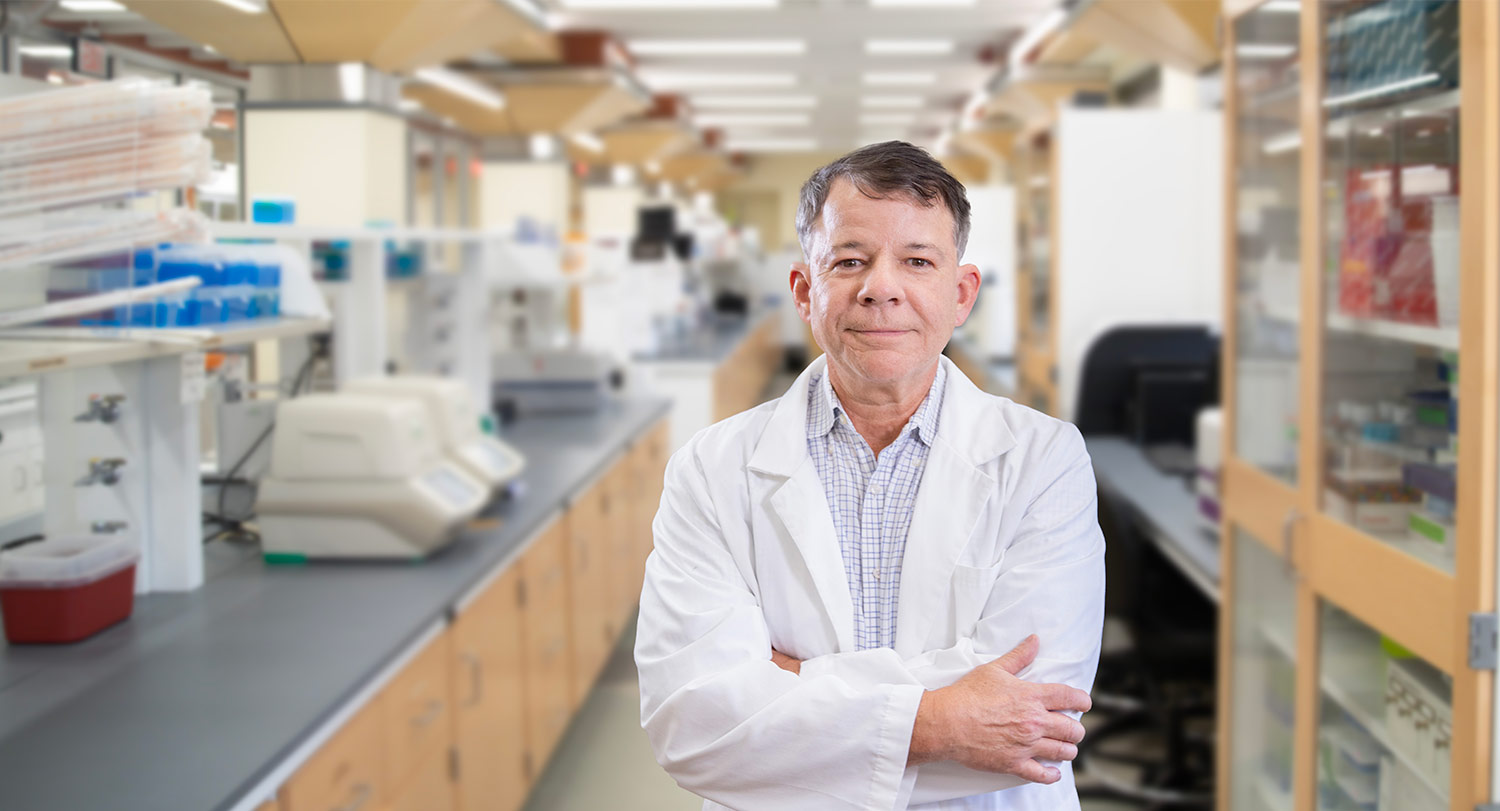
A multidisciplinary research team at the University of South Carolina is developing a novel technique for injecting a next-generation therapeutic drug into damaged heart tissue. If the procedure is eventually approved by the FDA, it could become a breakthrough treatment for patients diagnosed with heart failure.
Dr. Frank Spinale, associate dean for research and graduate education at USC’s School of Medicine Columbia, is leading the effort, which is currently funded by a four-year grant from the National Institutes of Health. The project builds upon Spinale’s decades of cardiovascular research and his collaborative drug discovery efforts with biomedical engineering faculty at USC and his long-time collaborator Jason Burdick, a biochemical engineer at the University of Colorado.
Spinale’s collaborators in USC’s biomedical engineering department include Tarek Shazly and Ahmed Alshareef, who have developed a U.S.-patented device to precisely inject the drug into damaged cardiac tissue. The system is under further development with Amro Alshareef, a Ph.D. student in robotics at the Georgia Institute of Technology.
“It wouldn’t be a stretch to say that this is one of the most significant research projects I’ve been involved with in more than 30 years of cardiac research. I’m very excited about it, and I’m going to push this until I can’t push it anymore.”
“We are taking an entirely different approach than other research groups to tackle a serious problem in the United States and worldwide,” Spinale says. “Unfortunately, there are more than 6 million heart failure patients in the United States, and more than 500,000 are admitted to the emergency room each year with worsening symptoms. The population of patients with heart failure is growing exponentially because the diseases that bring you to heart failure such as diabetes, high blood pressure and obesity are all rising, as well.”
The USC team’s efforts have been focused on how best to deliver a small-molecule drug that inhibits dysfunctional fibroblasts in heart tissue following a heart attack. The team has developed a type of gel made of human proteins that carries high concentrations of the drug. Once applied to the outer aspect of the heart, the gel embeds itself into the heart muscle and, over the course of several weeks, releases the drug directly where it’s needed.
Normal cardiac fibroblasts regulate the extracellular space between heart cells, a process that maintains the overall health of cardiac tissue. After a heart attack, the fibroblasts can become dysfunctional and eventually destroy the cardiac tissue. The small molecule drug works by reining in the dysfunctional fibroblasts.
“When we isolated fibroblasts from patients with end-stage heart failure and compared them with fibroblasts from patients with breast cancer and colon cancer, the cells were the same,” Spinale says. “It appears as though heart failure may be a form of interstitial cancer. So, this research project is another step in confirming that scientific view.”
The gel injection technique has been tested on patients with severe heart failure in past clinical trials and has proved to be a safe approach. Additional research is needed to perfect the fibroblast-inhibiting drug gel and the injection device that delivers it to the heart, Spinale says. In addition, industry partners will be needed to manufacture both the gel and the injectors, following strict FDA-approved guidelines.
“It wouldn’t be a stretch to say that this is one of the most significant research projects I’ve been involved with in more than 30 years of cardiac research,” Spinale says. “I’m very excited about it, and I’m going to push this until I can’t push it anymore.”